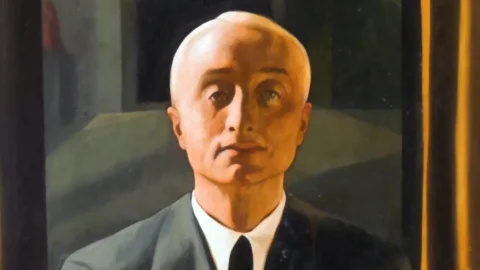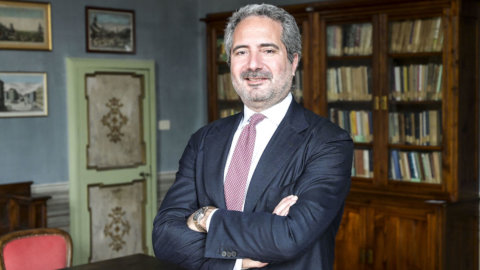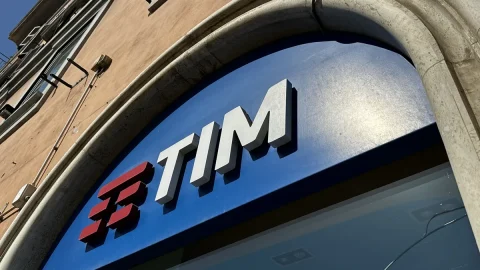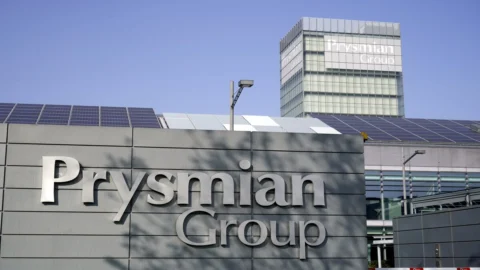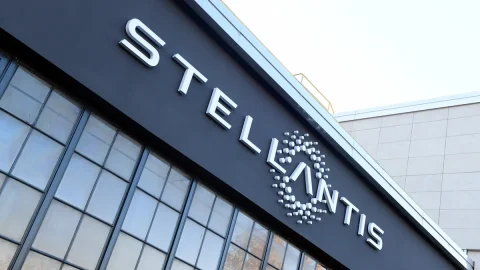Until March 10th in the sumptuous premises of the Bank of Italy of Florence, as part of the exhibition “Towards modernity. Female presences in the art collection of the Bank of Italy", a fair number of works belonging to the entrepreneur and art collector could be admired Richard Gualino. In fact, in the 1930s, Gualino had succumbed, as you will read, to the intervention of Elena Tempestini, his important art collection at the Bank of Italy to deal with the economic difficulties of his various entrepreneurial activities.
Gualino, in addition to being a leading figure in the Italian business world and art collecting, he was also the founder and animator of the Lux Film, one of the major Italian film studios in the golden age of Italian cinema. It is this aspect of his multifaceted activity that we are interested in exploring in this area. This is why we asked journalist Elena Tempestini, collaborator of the online magazine Green Economy&Finance, to tell us and our readers the story of Lux Film. First, however, it is necessary to introduce the character of Riccardo Gualino. The profile of the Piedmontese entrepreneur constitutes the first of the two parts of Elena Tempestini's contribution.
The second part, which will be released next Sunday, will be dedicated to Lux Film.
Riccardo Gualino from Snia Viscosa to Lux
Art, industry and patronage. Riccardo Gualino, son of the good Piedmontese bourgeoisie, was a great lover of art which he shared with his wife Cesarina, in turn the daughter of an important and rich industrialist. Together they managed to build, in the first decade of the 20th century, a large fortune consisting of lumber, cement, banking and real estate industries. Gualino was a friend and partner of Giovanni Agnelli with whom they alternated as vice presidents of their companies. It was vice president of Fiat, shareholder of important automotive industries, of the newspaper "The print” and owner of the weekly magazine “The Ambrosian".
Gualino was an entrepreneur but also a businessman, cynical and visionary, with the SNIA Viscose industry, became known everywhere. He owned one of the art collections most important in the world, composed of ancient works by Giotto, Cimabue, Duccio di Boninsegna, Botticelli, Mantegna, Filippo Lippi, Titian, Paolo Veronese, Andrea Pisano and others. The modern collection included paintings by Guttuso, Severini, Mafai, Maccari, Picasso, Degas, Rosai, de Chirico, Morandi, Casorati, Manet, Chagall, Modigliani, Fattori, Fontana, Carrà and many others. The entrepreneur and patron bought the Turin theatre and he had seven paintings by Modigliani placed in the atrium. In 1927 relations with Agnelli began to break down due to differences in political views.
From confinement to activities in France
Riccardo Gualino's fortune was undoubtedly linked to his unscrupulous character, he was practically a different character, his personal motto was "To dare” which we will often find between the lines of his autobiography: Confessions of a dreamer. A volume that has never been deliberately edited for seventy years. In 1931 Riccardo Gualino was arrested by the fascist regime that confined to Lipari and subsequently to Cava dei Tirreni. Previously he had managed to sell a large part of the pictorial collection to the Bank of Italy with which he had contracted the largest debt, so much so that the Bank was forced to put a certain number of works on sale, but a large part was protected and today is part of the prestigious collection preserved in Palazzo Koch, in Rome. Gualino regained his freedom in 1932, and through relatives and frontmen we find him in France, at the head of vast circles of interests in the real estate and healthcare sectors supermarkets: the Societé anonime des cafés et restaurants françaises.
We also find it in Cheap, a Luxembourg financial company, in the Consortium privé, which with the Parisian subsidiary, the Comptoir privé, directed by its brother-in-law Ermanno Gurgo Salice, carries out wide-ranging operations on the currency market and on that of the equity securities. With the support of the Banque de l'Union parisienne, in which his friend Oustric is still active, Gualino quickly resumes the ranks of a vast business network which includes, among others, the anonymous companies Roumano-Belge des pétroles, the Swiss Sa des Fours Pieters, in combination with the Nobel Prize winner Friedrich Bergius, for the hydrogenation and distillation of coal, the Compagnieindustrialle française du platine or the Mines d 'or de peck, for the management of deposits in Yugoslavia.
New activities in Italy
In Italy the new poles of interest are concentrated in chemistry and in cinematography. In the first sector the main company became the Rumianca, originally an auxiliary company of Snia, of which Gualino took over control from the Abegg group in 1933. Rumianca had recorded considerable success starting from the mid-XNUMXs by producing fertilizers and fungicides, then entering the flows of orders and public financing of industrial mobilization and doing excellent business with war production. During the war the company had two factories in the Novara area for mineral washing and basic chemical production, one near Turin for the production of soaps and one under construction in Carrara for the production of fungicides, as well as vast mining complexes in Val d'Ossola, Sardinia and Calabria for the extraction of pyrites.
At the beginning of 1934 Riccardo Gualino's second life began with the cinematography. Having been banned from holding public office for ten years due to his beliefs, he could not appear in the company's articles of association. His brother-in-law Ermanno Gurgo Salice became President and Guido Gatti, a well-known musicologist and important figure in the environment frequented by Gualino, became CEO. The main financier of the company, who however did not appear on the company's board, was the textile industrialist Attilio Rivetti. Already at the time art was not only painting, music and dance, but also the expression of images: cinema. He firmly believed that the film industry was in its infancy, seeing great potential for expansion around the world. The new technologies that were used fascinated him and he considered it a great communication strategy for the masses.
In 1934 he then founded the Lux film.
Who is Elena Tempestini
Elena Tempestini she is a writer, journalist and photographer who collaborates with #Economia&FinanzaVerde and is founder of the blog #Prospettive. Her speeches in her voice can be listened to in podcasts on #WhiteRadio. Elena above all likes to investigate the relationship between past and present, trying to give prominence and order to the chaos of events that weave our today. Through the knowledge and study of ancient memories it is possible to retrace events that unite figures of greater or lesser importance for a better understanding of the economic, political, social, cultural, religious, national and international facts of all cultures. To this end she also loves to reconstruct and describe the ordinary lives of the major protagonists, illustrating lesser-known aspects of their lives. She is convinced that we need a new humanism and a new renaissance to rediscover and share the beauty of the world around us and that she also passionately loves to photograph.

